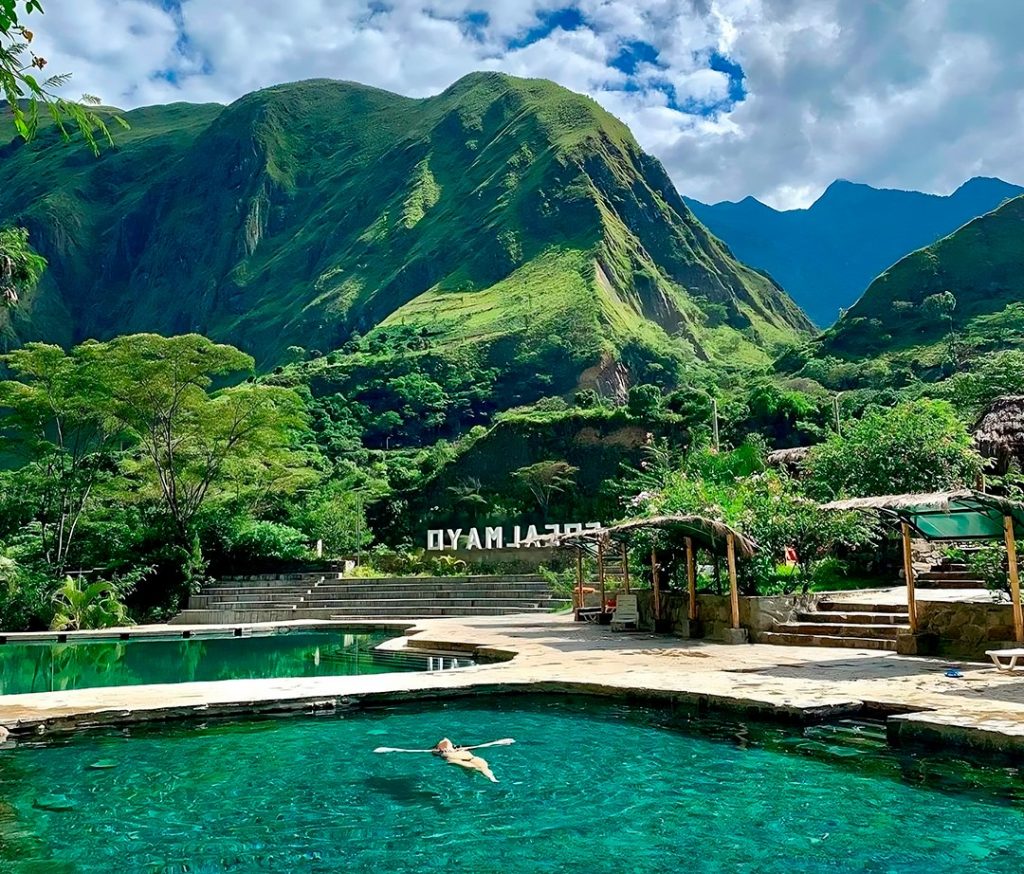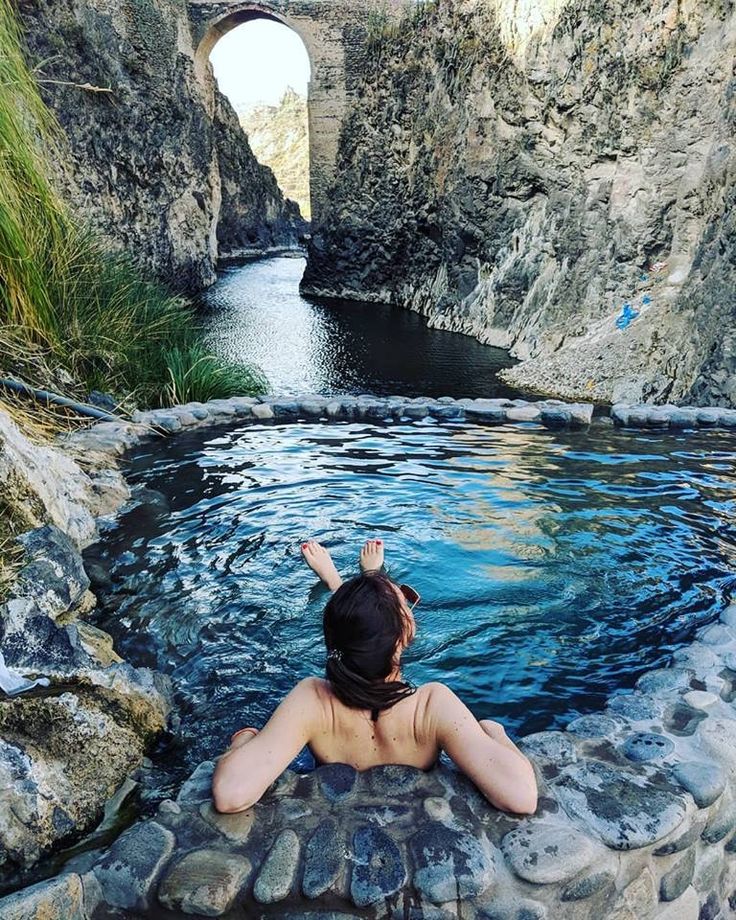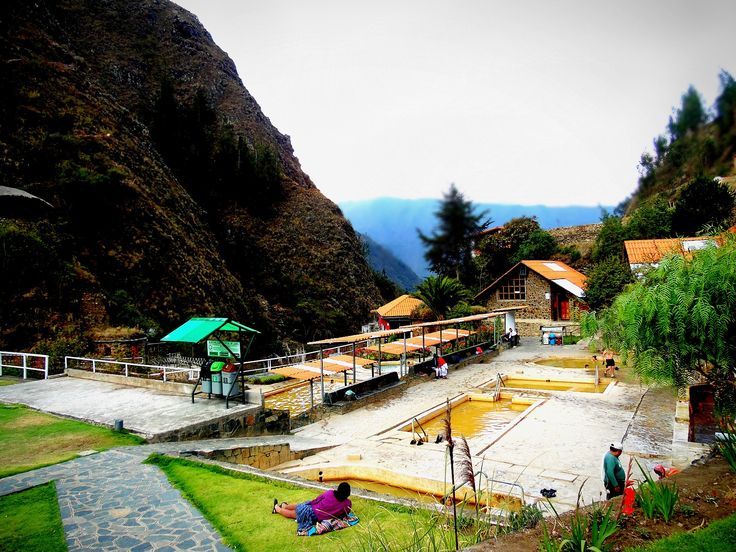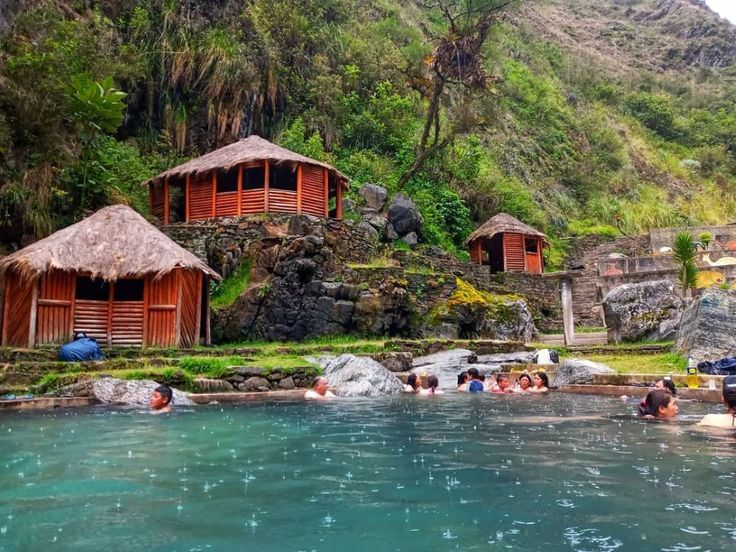After a day of adventures, surprises, and discoveries, it’s time to rest. Besides stretching your feet in your hotel’s spacious bed, what else can you do to ease your tiredness? Peru’s geography gives it deep canyons, stunning ruins, and colorful lakes, and also has imposing volcanoes.
As a result, you can find thermal waters and hot springs in some Peruvian cities. So, after an extraneous tour day through Peruvian territory, why don’t you rest your aching feet in a natural thermal bath that Peru offers? Let’s take a look at some of the most popular hot springs in Peru, let’s go!
Aguas Calientes Hot Springs
We’d like to point out that this town, also called Machu Picchu Pueblo, was named “Aguas Calientes” for its hot springs. Aguas Calientes is your gateway before reaching the ancient Inca citadel. Although this town is tiny, it has some interesting activities to offer, such as its hot springs.
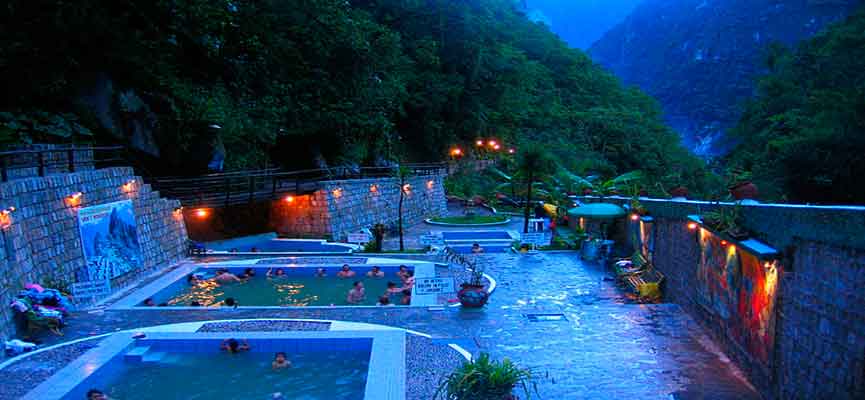
Its waters have medicinal properties that can cure rheumatism and some kidney and joint diseases, their temperature ranges from 38 to 46 degrees. The entrance prices range from 20 soles for foreigners (USD 5.00), 10 soles for Peruvians (USD 3.00), and 5 soles for locals (USD 0.80). The entry hours are from 5 a.m. to 8 p.m.
To relax, enjoy cocktails at the bar in this Cusco hot spring complex while swimming in the pools. Similarly, it has all the essential facilities, including restrooms and areas for changing clothes.
Cocalmayo Hot Springs
About 30 kilometers from Machu Picchu, in the Sacred Valley, in La Convención Province, is the Santa Teresa Village. Approximately 1600 meters above sea level, that is where it is located. Santa Teresa is on the edge of the Cusco wilderness, a required stop for travelers on the “alternative route to Machu Picchu.”
“Los baños termales Cocalmayo de Santa Teresa” are located 20 minutes from Santa Teresa village. The 38°C to 44°C hot springs are well-known for their high temperatures and unspoiled natural surroundings. After exploring Machu Picchu, relax in these healing waters, and enjoy the perfect blend of stunning scenery and ancient culture.
These healing waters can be used to treat rheumatism, bone pain, and skin ulcers. Every day of the week from 5 a.m. to 11 p.m., visitors can enjoy the thermal waters at Santa Teresa. For foreign visitors, the entrance fees vary from 30 soles (USD9.50) for foreigners, 10 soles for Peruvians, and 5 soles for Cusqueños.
Chacapi Hot Springs
The Arequipa region is in the heart of the Peruvian volcanic zone, so no wonder why you’ll find several hot springs scattered in this region. Chacapi Hot Springs, also called the Yanque Baths, is a stunning natural site in Arequipa. It is part of the Colca Valley’s thermal resources and can reach temperatures of 45ºC.
These hot springs are rich in minerals, and beneficial for people with arthritis and rheumatism, many visitors say they also improve skin appearance. It’s an ideal spot for those wanting to escape daily life, relax, or take photos.
Baños termales de Lares
The Lares Hot Springs is a great spot in the Lares Valley, Calca province. It is 3,250 meters above sea level. You can enjoy a delightful experience in a group of six inviting pools, five of which are warm and one of which is cool. The waters in these pools are heated to different temperatures, ranging from a cozy 36°C to a relaxing 48°C.
The pools come in various sizes, from 17 m² to 120 m², with a depth of up to one and a half meters, making them perfect for visitors to enjoy together. People love visiting these hot springs because they provide healing benefits. Not only do they offer comfort and reduce stress, but they can also help with some health issues.
You’ll see some pools may be brown or almost yellow, this means they are rich in minerals like iron, magnesium, zinc, sodium, and potassium. These minerals support your health, helping with arthritis and osteoporosis. They can also help with recovery from broken bones and tackle muscle and stomach problems. Enjoying these springs can be a wonderful way to feel better and relax!
Baños termales de Chimur
Another hot spring in the Cusco area is the Chimur hot springs, in Challabamba, Paucartambo. They are 59 km from the provincial capital, Paucartambo. It is a 4-hour trip via the Cusco – Calca – Chimur por Amparaes. The Chimur Hot Springs are crystal clear and transparent, with temperatures ranging between 46 °C and 53.
These hot springs are the perfect place to leave the stress out with your family while enjoying the healing properties that they offer. A bath in these waters raises body temperature by killing germs and viruses, and increases hydrostatic pressure, blood circulation, and oxygenation. It also enhances oxygenation, nourishes tissues, and aids digestion.
These waters contain sulfur and can be curative for certain skin conditions such as fungal infections and dermatitis, they also help heal wounds and various skin lesions. Additionally, they reduce pain and relax tension concentrated in muscles and joints.
Los Baños del Inca
Cajamarca is a charming city in northern Peru, known for its rich history, vibrant culture, and stunning landscapes. Within the city, “Los Baños del Inca” is a cherished city attraction. It’s a lovely complex of natural hot springs with an interesting story, your visit will let you enjoy the stunning scenery and also learn about the site’s fascinating history.
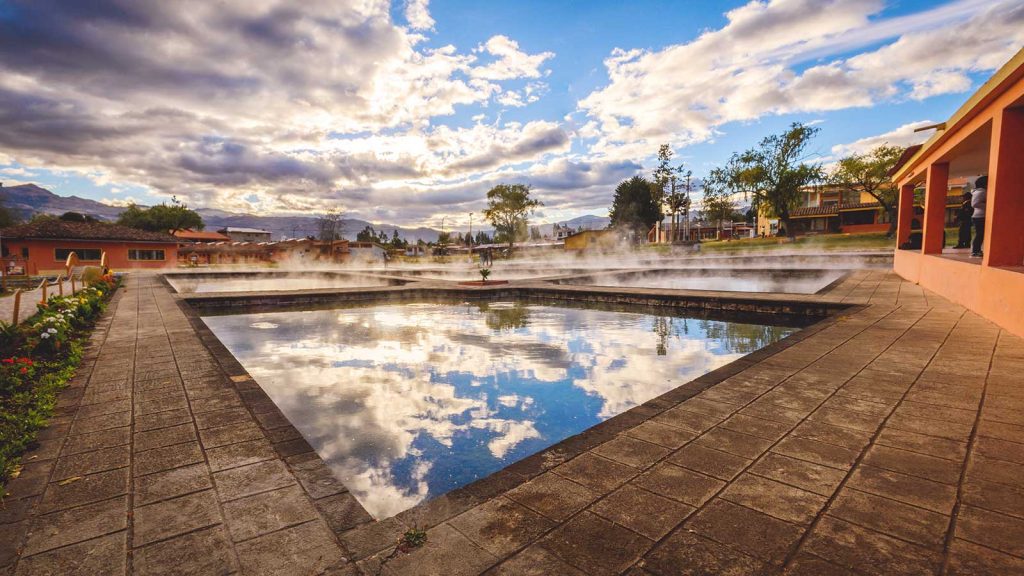
It is believed that Atahualpa visited these hot springs regularly for their healing thermal waters. History says that even Túpac Yupanqui, a famous Inca ruler, benefited from the curative properties of this place. The natural hot springs of the Baños del Inca are the main attraction here. The outdoor pools are fed by hot springs that emerge from the depths of the earth.
Some swimming pools are over 70 degrees Celsius, perfect for unwinding and refreshing. The hot water is a nice temperature, and it’s full of minerals with healing properties. Many visitors say that swimming in the pools eases tense muscles and boosts their well-being. It’s understandable why Baños del Inca has been a cherished healing haven for so many years!
FAQ,s
When’s the best time to visit Hot Springs?
The rainy season in Peru is from November to March, so be cautious in your trip to hot springs as they’re located in remote and far areas from the big cities. If you love rain, taking a bath while you get soaked by rain is a wonderful combination.
Are these hot springs really safe?
Yes, they are. As we said in this blog, Hot Springs include healing properties. However, we strongly recommend following any rules from the staff.
Where Can I Find Hot Springs in Peru?
In cities like Arequipa, Cusco, Cajarmarca, and Tacna you’ll have available hot springs. Usually, they are located far from the city, so it’ll be a good idea if you hire a private transfer or a tourist travel company. You can also ask locals to get to certain hot springs.
Is it ok drinking water from hot springs?
Hot spring water is usually safe to drink. However, we recommend other drinks while you soak. Since many people use the springs before you, the water might have been treated with chemicals, your health and enjoyment are our top priorities, so it’s best to play it safe!
The shop and tap water at an established hot spring are heated by the spring itself, and there are distinctive filling stations everywhere. It’s simple to fill your jugs with cool spring water as this wonderful water is also available at the surrounding facilities’ taps. Enjoy!
We hope you enjoy your trip while staying healthy. So, in Peru, take a healthy dip and make the most of our country. Viagens Machu Picchu will be more than glad to assist you in realizing your dreams in our country. Contact us to start living your dreams!
Viagens Machu Picchu, journeys that inspire, moments that last.
| Spanish > Viagens Machu Picchu |
| English >Viagens Machu Picchu |
| Portuguese > Viagens Machu Picchu |


